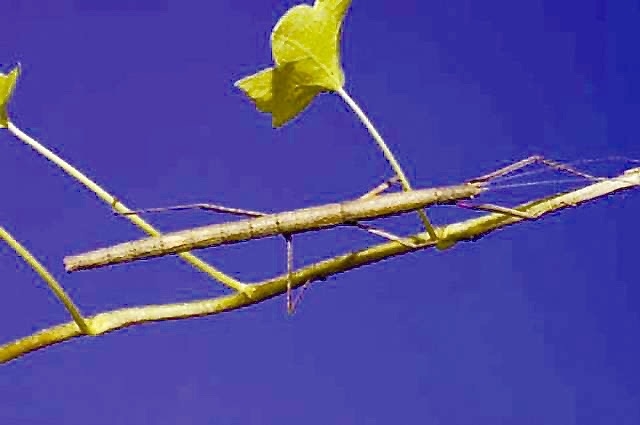Walking Sticks
By Lee Oliphant UCCE Master Gardener
I've found a bug that looks like a twig with legs. Is it harmful? How do I get rid of it? Pat M., Cambria.
Looks like you've found an “exotic” (not native to the region) Indian walking stick insect (Carausius morosus). While there are native walking sticks, they are not usually found in the garden. They live in native grasslands.
This strange looking insect arrived from tropical climates and was first found in Southern California in 1991. This species is a popular pet and likely escaped. They've been eating their way north and are now becoming a pest in central coast gardens, especially along the coast.
The Indian walking stick is greenish brown in color and grows to be about 3 inches long, but can appear much longer when the front legs are extended. Walking sticks are masters of camouflage. Their shape and color is similar to twigs and branches and their behavior can mimic plant material swaying in the wind. When disturbed, the walking stick retracts their legs and holds perfectly still making them look even more sticklike.
Walking sticks reproduce without mating, laying several hundred eggs over their lifetime. Eggs hatch in 10-12 weeks and nymphs begin to wander about. Nymphs develop into adults in about 4 weeks.
No research has been conducted on natural enemies of Indian walking sticks. They hide inside host plants during the day and are difficult to see because of their shape and color.
Both nymphs and adults have an appetite for foliage of azalea, bramble, camellia, geranium, hawthorn, hibiscus, ivy, jasmine, oak, privet, pyracantha, rose and some garden vegetables. They're most active at night, chewing around the margin of leaves making ragged edges.
Spraying insecticides for walking sticks is not recommended and is likely to disrupt beneficial insects. Instead, handpick them off at night, dropping them into a bucket of soapy water.
If you keep Indian walking sticks as pets, use caution when cleaning out the cage. The eggs look like frass and will survive the trash and later hatch. Bag all cage debris and freeze for at least 48 hours before placing in the trash.
For more information on Indian walking sticks visit- http://www.ipm.ucdavis.edu/PMG/PESTNOTES/pn74157.html
